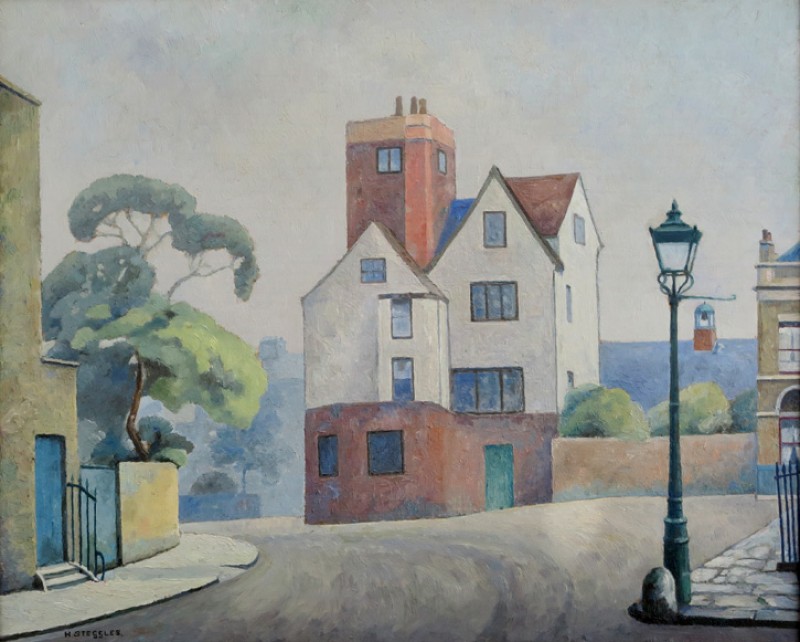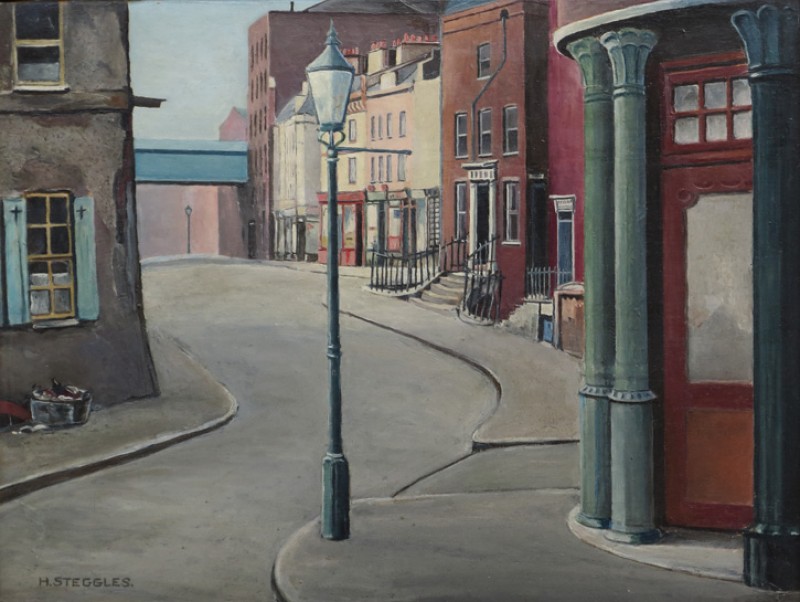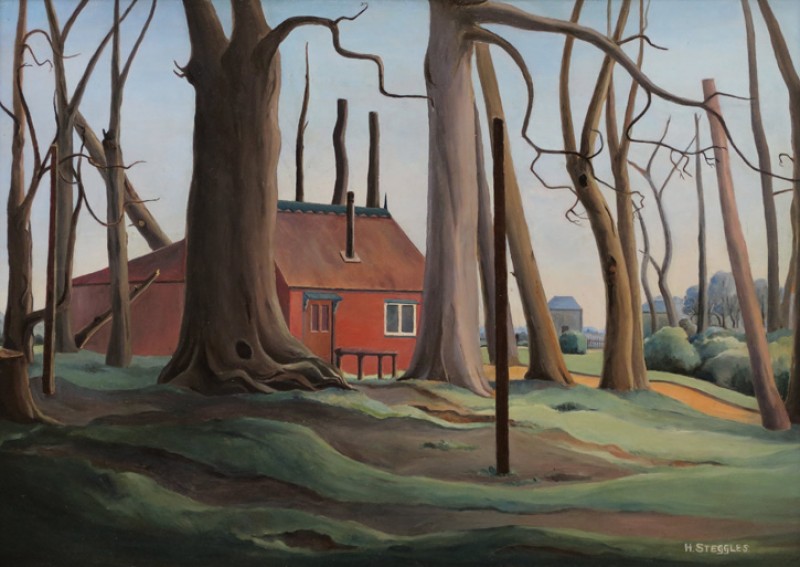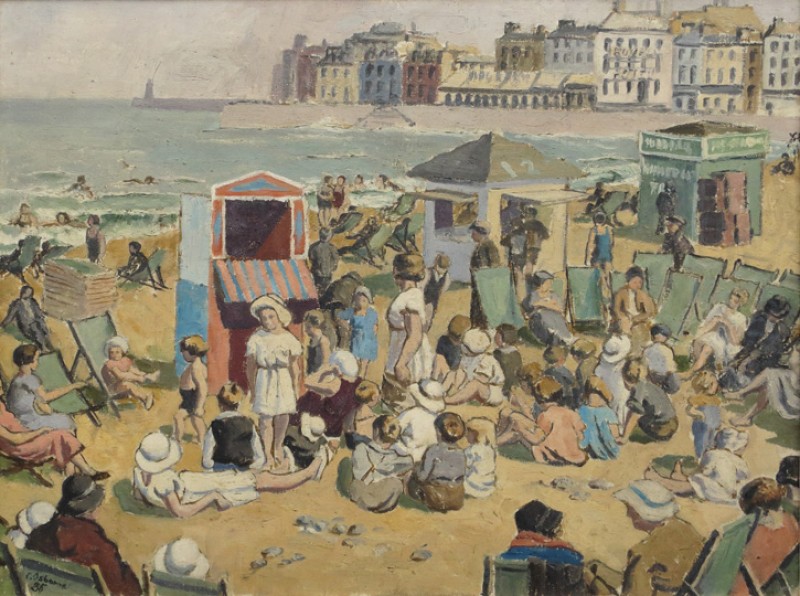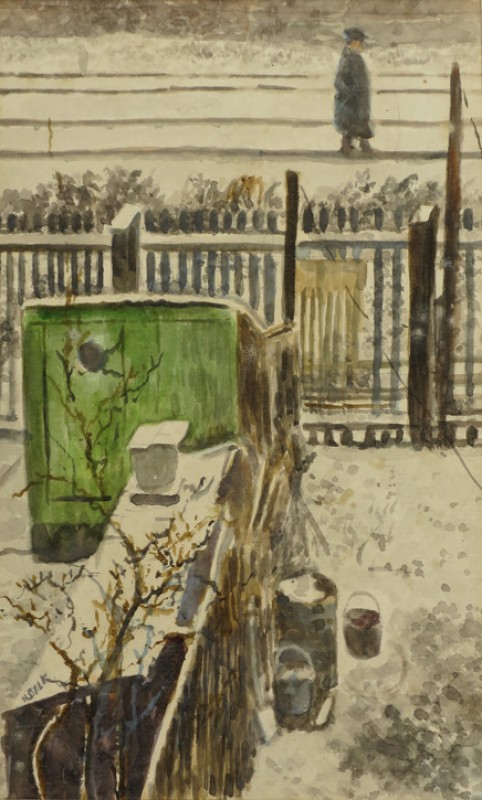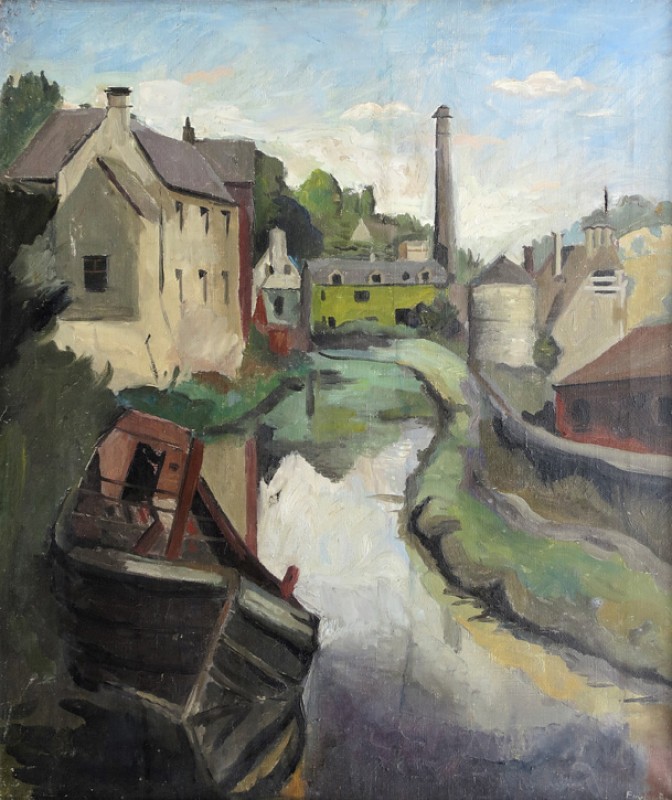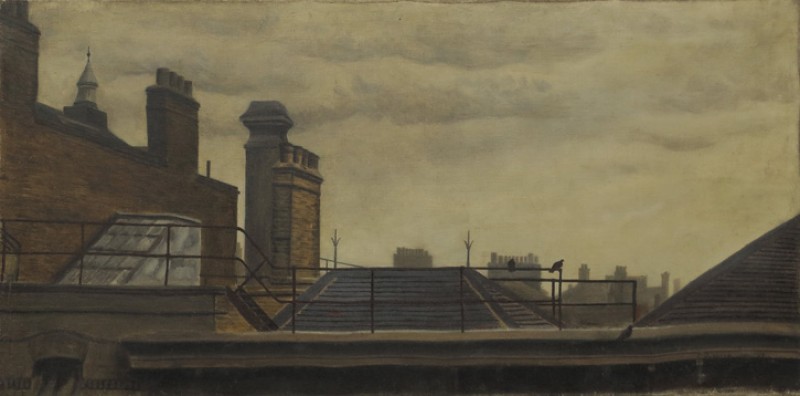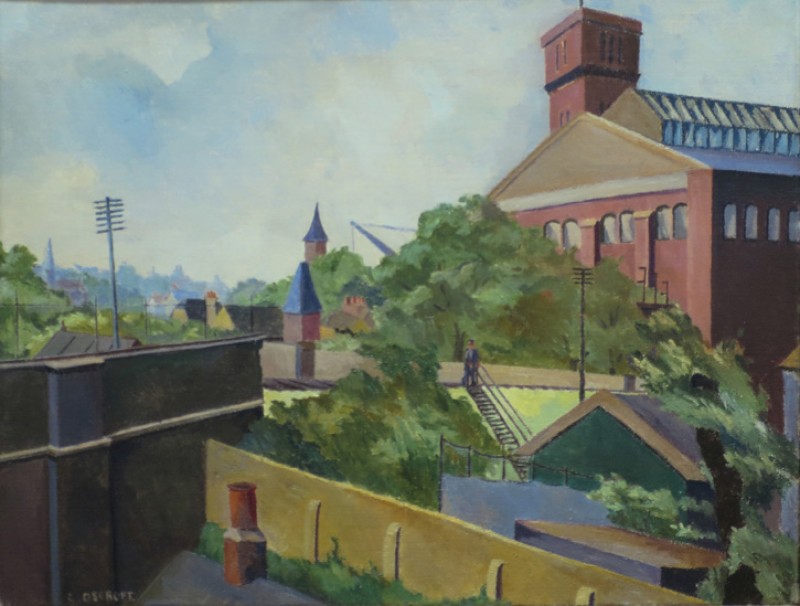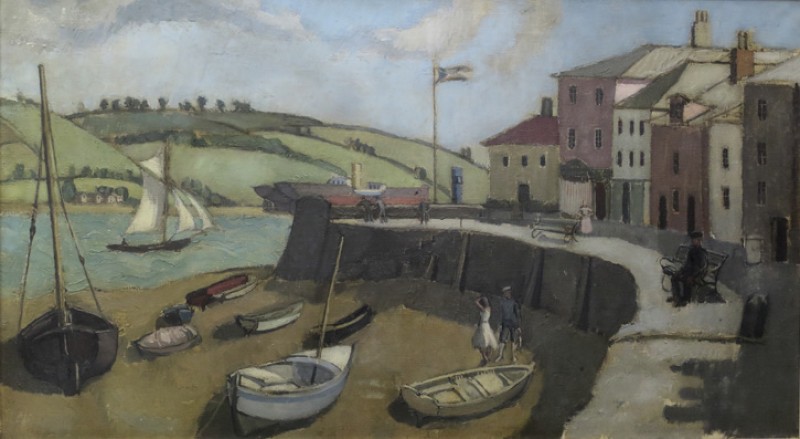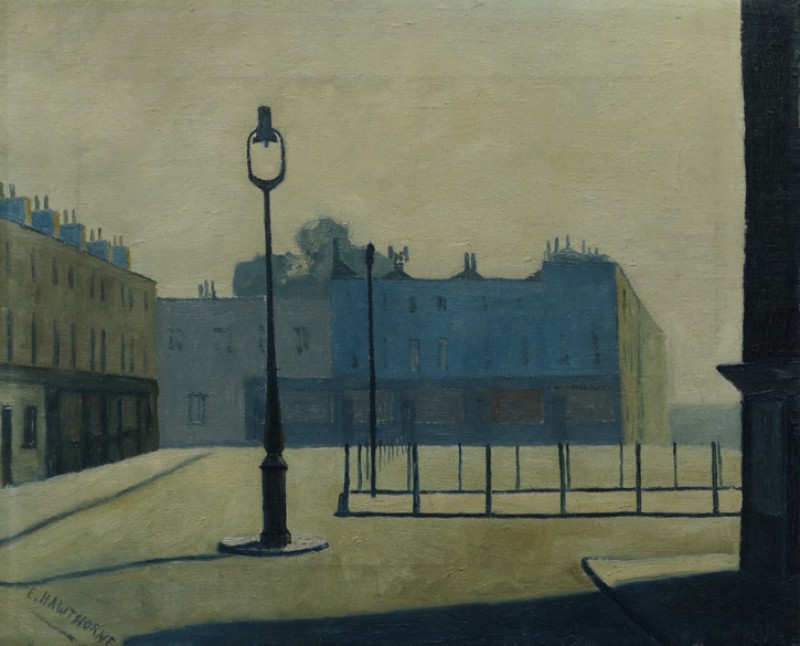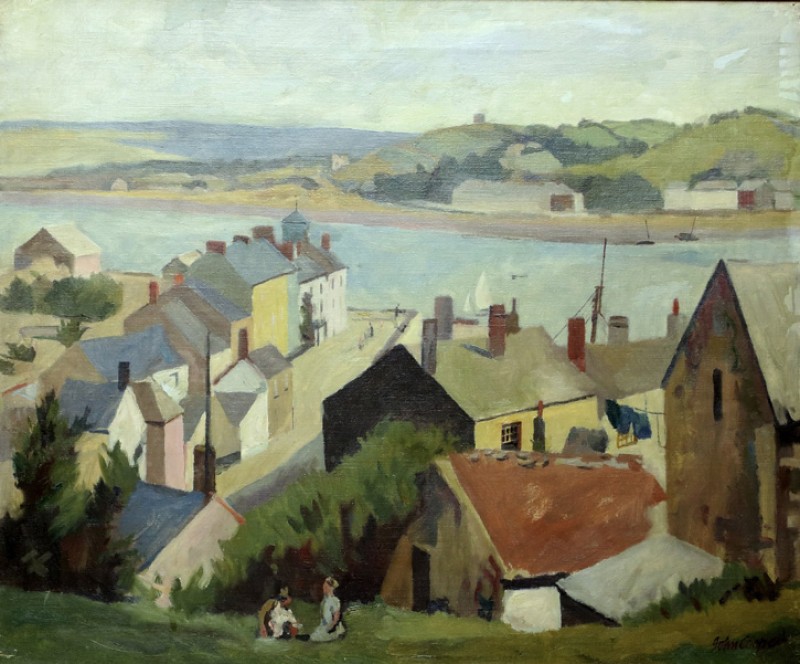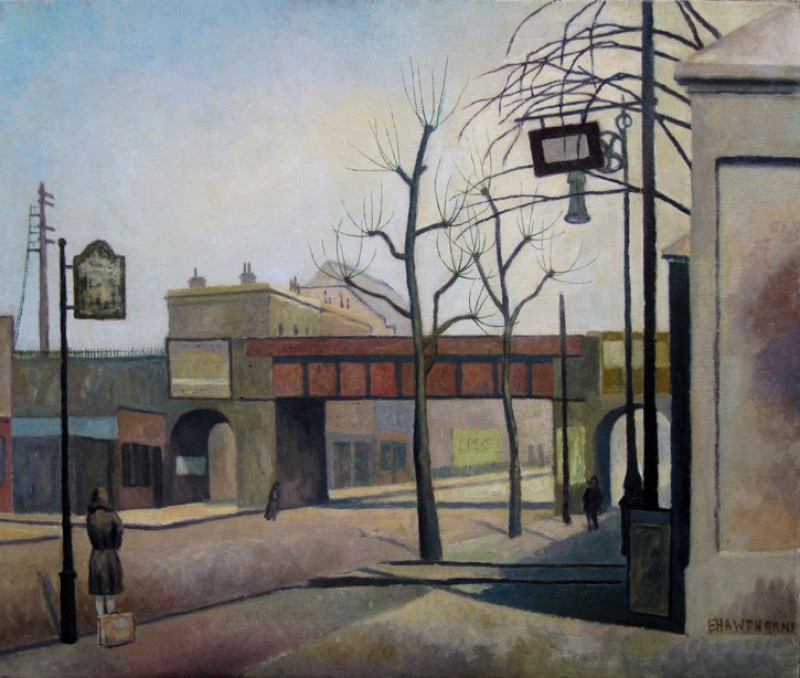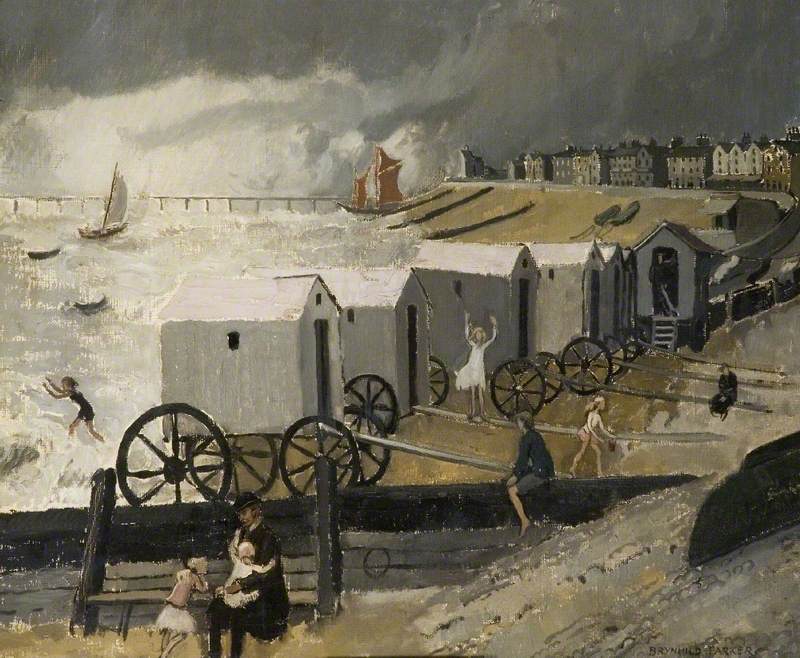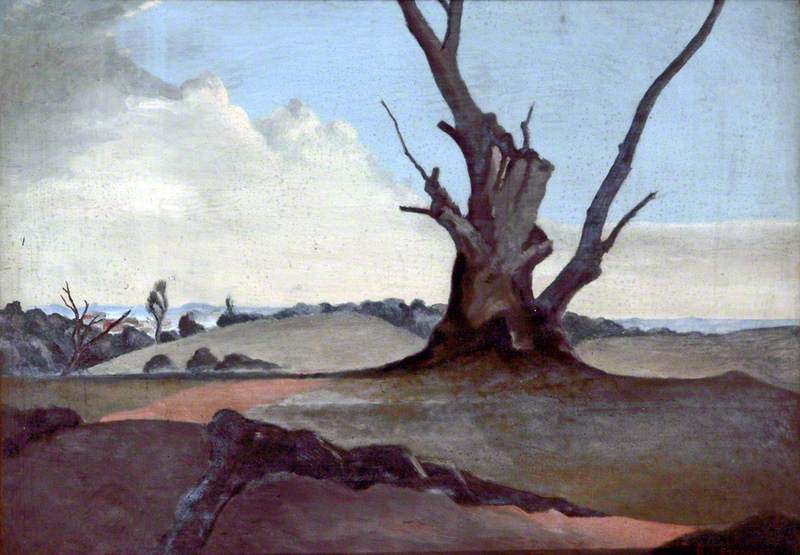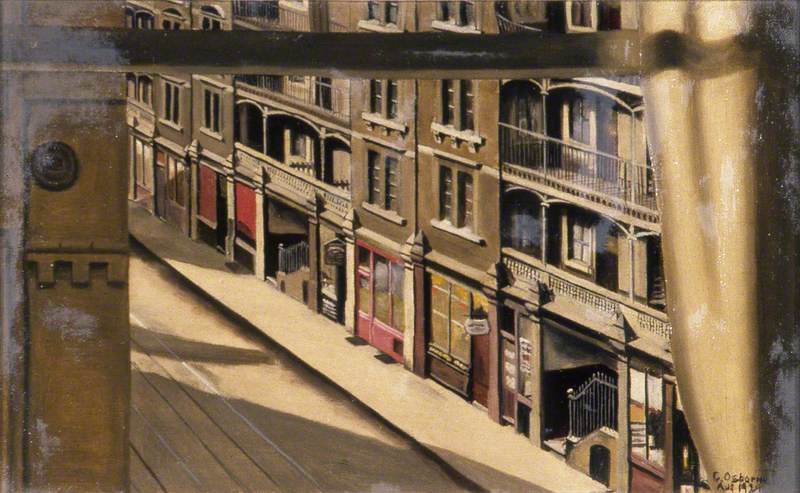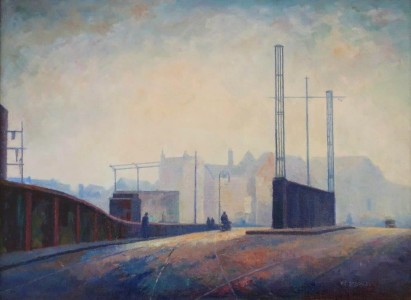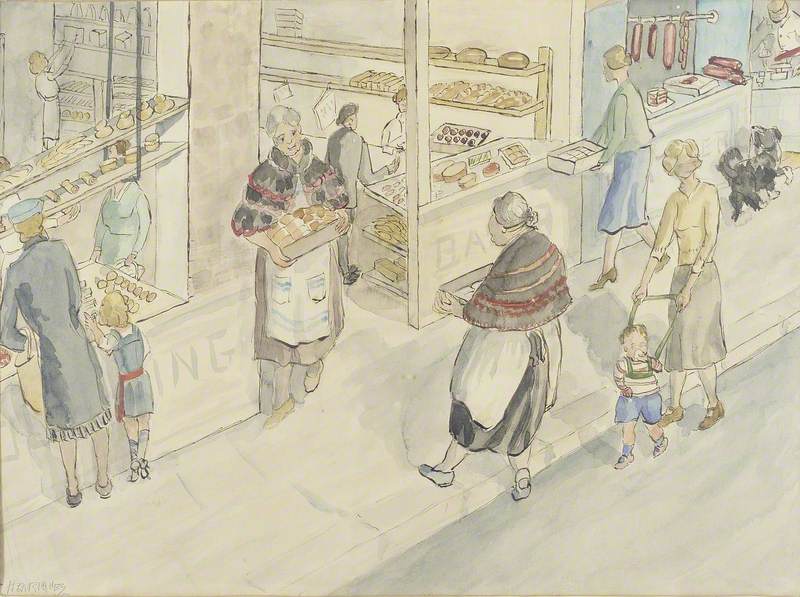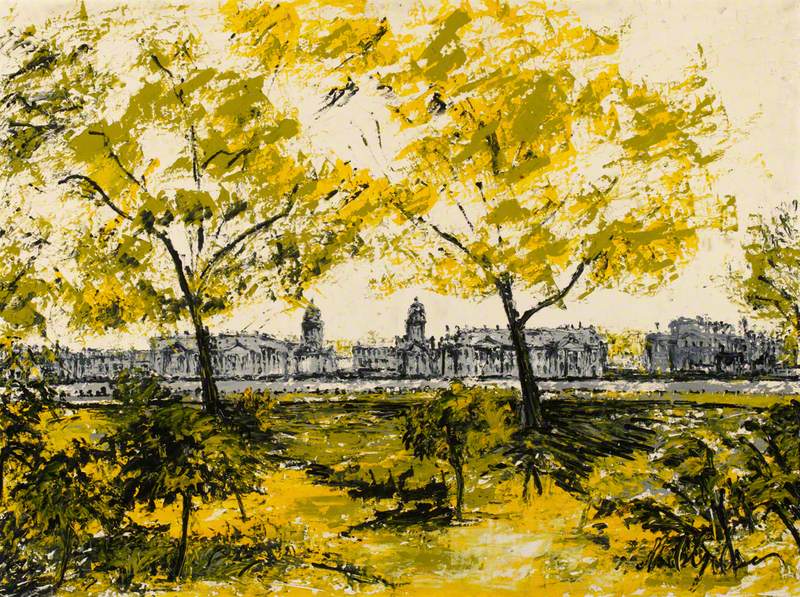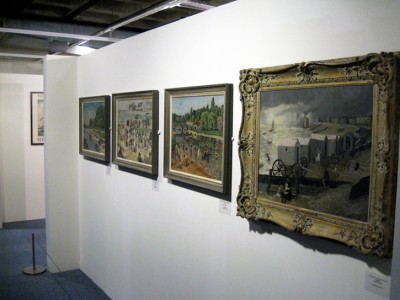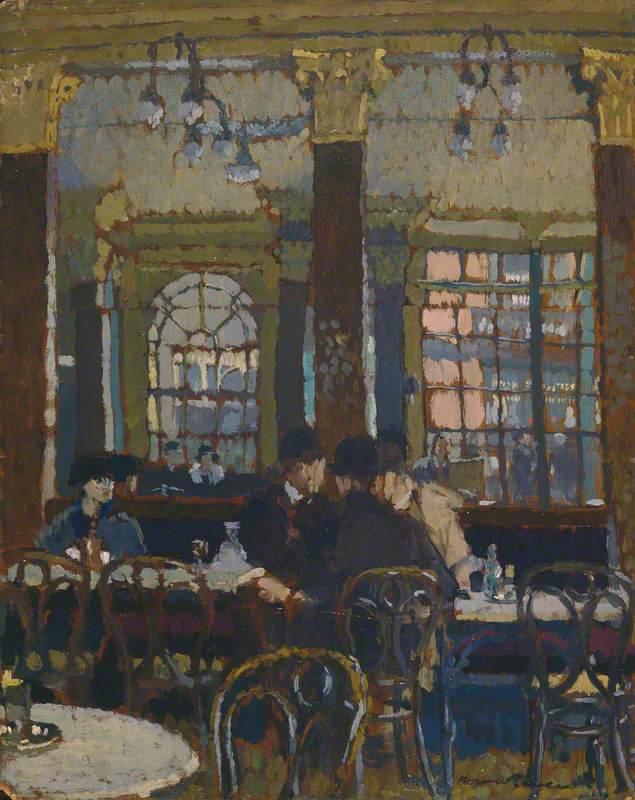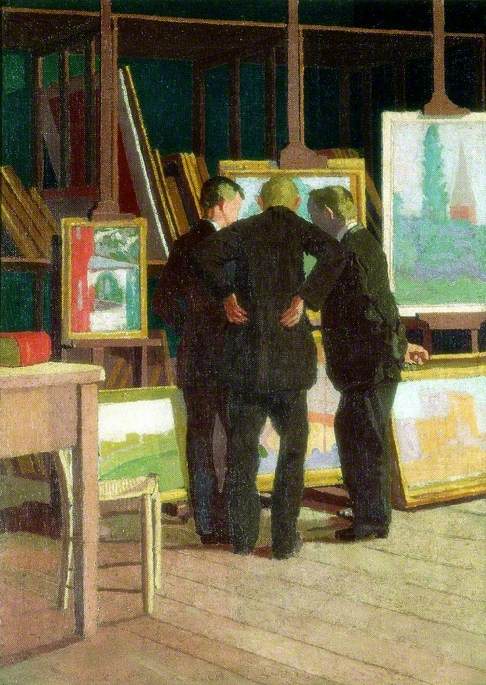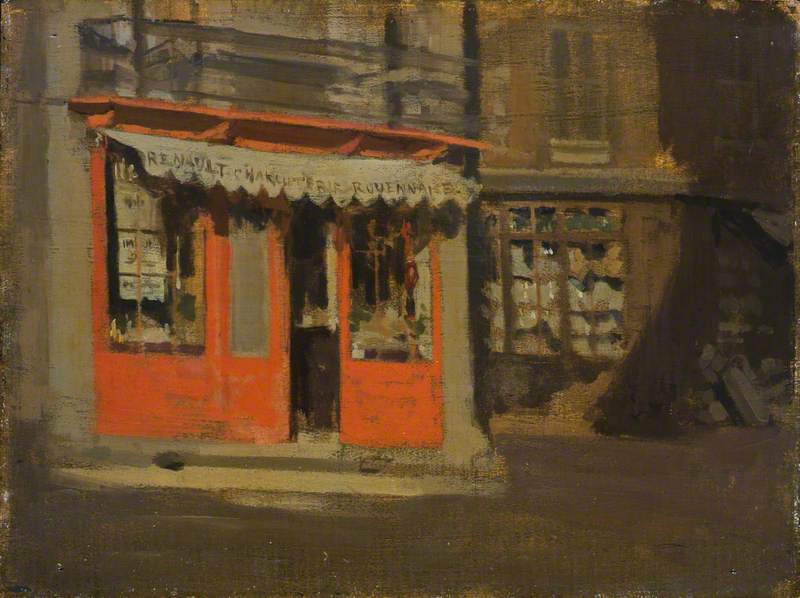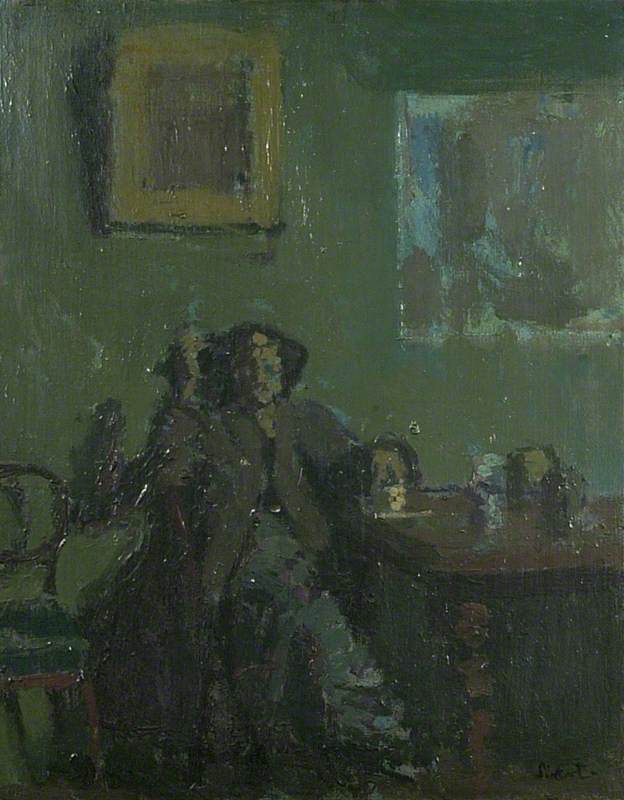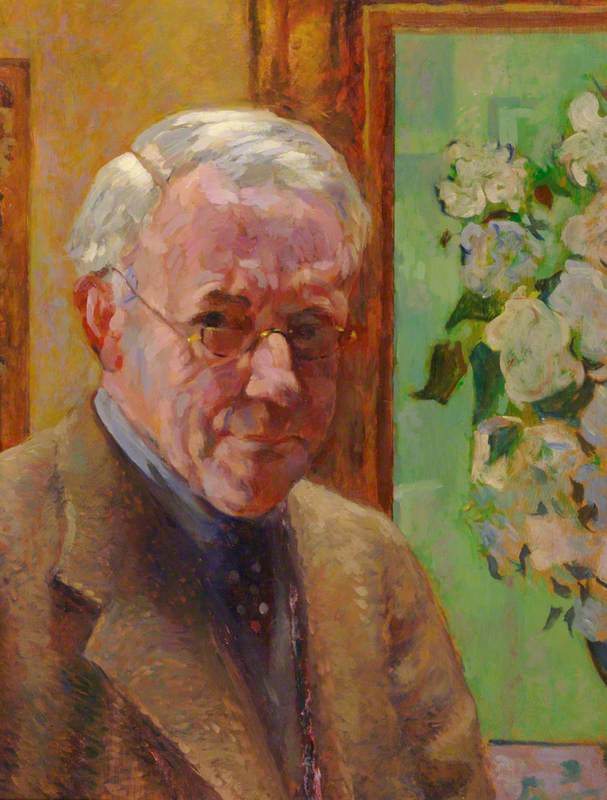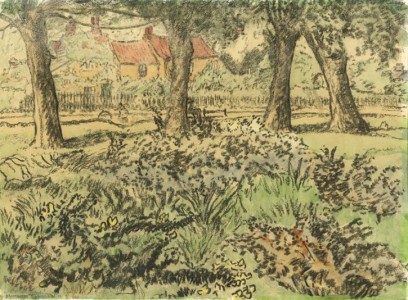Interest in the work of the East London Group has grown steadily since the publication of David Buckman's book From Bow to Biennale: Artists of the East London Group in late 2012. This growth has been boosted by two exhibitions at the Nunnery Gallery in Bow in 2014 and 2017, one at the Beecroft Art Gallery in Southend in 2016 and one at Southampton City Art Gallery in 2017 – and a growing social media presence.
Grove Road, Bow
c.1932 by Harold Steggles (1911–1971) 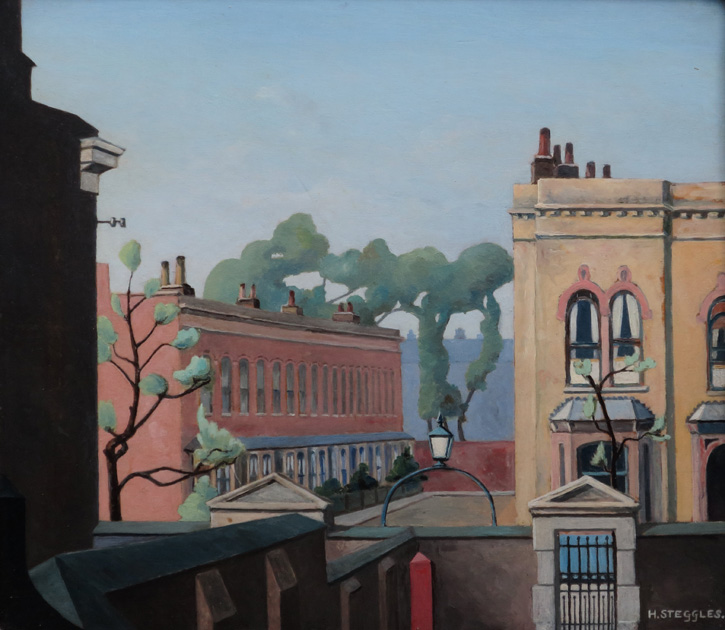
The new show 'Brothers in Art: Walter & Harold Steggles & the East London Group' (11th September 2021 to 8th January 2022) sees the Group's work return to the Beecroft Art Gallery in Southend. The focus will be on the Steggles brothers – Walter and Harold – who were jointly responsible for the production of 150 of the Group's total output of 730 paintings during their eight-year exhibiting career at Alex Reid & Lefevre in Mayfair.
The show will comprise around 150 paintings, mainly oils, but with some works on paper as well as advertising posters. The brothers' contribution to the show will be roughly half of that number with the balance made up by work from a dozen or so of their Group contemporaries.
Bow Bridge
c.1968 by Walter James Steggles (1908–1997) 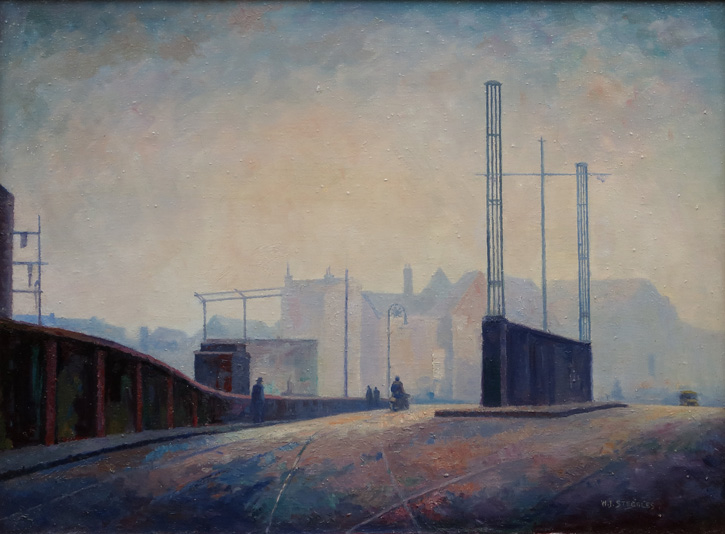
The Group came together in the East End as a result of evening classes held under the auspices of the Bethnal Green Men's Institute which began in 1924. The students would attend classes up to three nights per week and were fined if they were late or did not attend! John Cooper took over as tutor in 1925 and the attendance at the classes quickly increased and the classes transferred to the Bow and Bromley Evening Institute in 1927.
Thanks to connections with Sir Joseph Duveen, Sam Courtauld and Charles Aitken, Cooper was able to organise their first major public exhibition, as the East London Art Club, at the Whitechapel Gallery in December 1928 where they showed 178 paintings and six pieces of sculpture.
Stratford
1938 by Walter James Steggles (1908–1997) 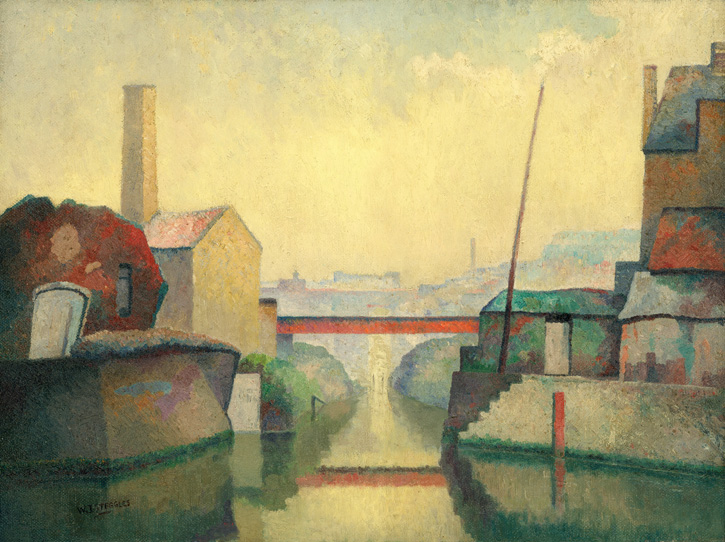
Due to the success of this show, the Group were soon exhibiting at the National Gallery of British Art (later the Tate Gallery) in early 1929. Provincial shows followed, as did interest from one of the leading West End galleries of the day: Alex Reid & Lefevre in King Street, Mayfair where they opened in November 1929 as the first incarnation of The East London Group.
Five Bells Wharf
1931 by Walter James Steggles (1908–1997) 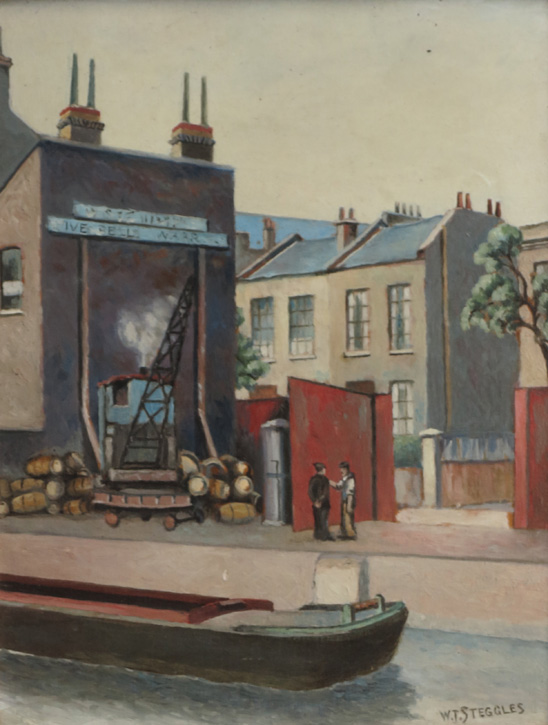
Among those whom Cooper had attracted to tutor his students was his friend, Walter Sickert: this was a great coup and had a long-lasting effect on the Group's output. Sickert encouraged the artists to paint their immediate surroundings and things from their everyday lives: he also employed Elwin Hawthorne as his studio assistant for about three and a half years. Hawthorne and Walter Steggles would go on to represent Great Britain at the Venice Biennale in 1936, which was arguably the peak of both men's artistic achievements.
Canonbury
1934 by Elwin Hawthorne (1905–1954) 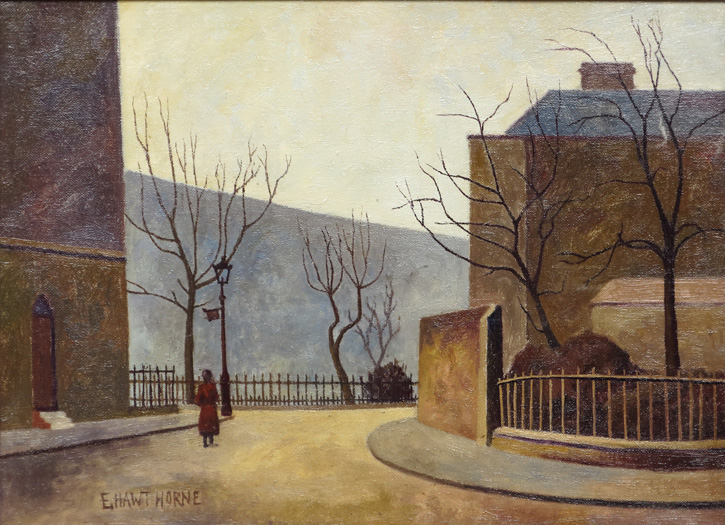
During its eight-year existence, the East London Group comprised of 33 exhibiting members, roughly half of whom contributed less than six paintings to shows in total which leaves 16 or 17 members who could rightly be described as 'core' to the Group's existence. Of those, the most prolific six or seven accounted for the production of 520 paintings. As things stand today, roughly 170 of the Group's 730 paintings can be accounted for as having survived so there are potentially a great many more of the 'lost' 550 to find!
Essex Landscape, Early Morning
1938 by Walter James Steggles (1908–1997) 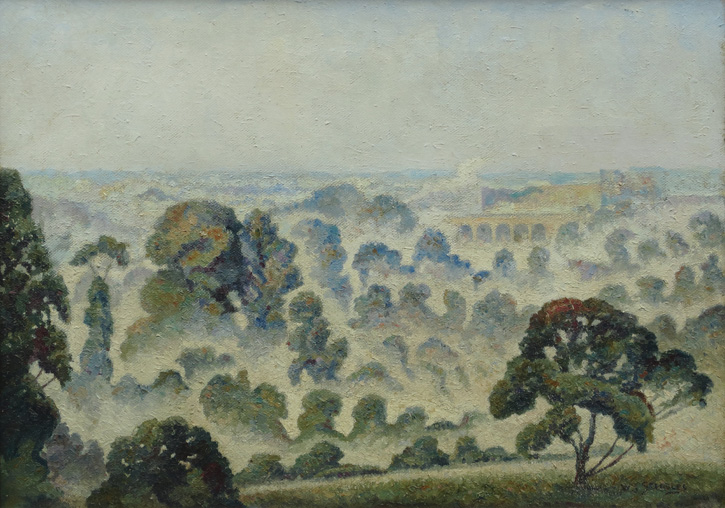
The East London Group are, more often than not, associated with their urban work but, interestingly, this formed barely 30% of their total output – landscapes and seascapes predominated with 46%, and the balance was made up of interiors, portraits and still life paintings. One of the works on display in the exhibition is a seascape in the form of Windy Day on Marine Parade, Southend by Brynhild Parker, which was listed simply as Southend in the 1931 Group show.
The artist has captured the essence of a classic, windy, British seaside afternoon where only the hardier souls venture forth! The old-style bathing huts form an interesting feature as they had been pretty much abandoned from their original purpose prior to the First World War, but it seems that many resorts kept them on as a form of mobile beach hut well into the 1930s.
St Mark's Church
1934 by Harold Steggles (1911–1971) 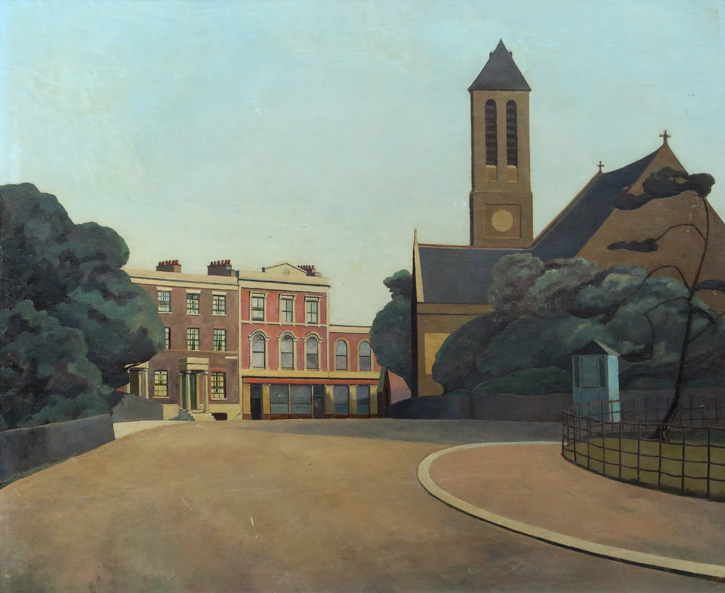
The exhibition will show an extensive range of the Steggles brothers' work from the East London Group period in the 1920s and 1930s as well as post-war work, mainly from Walter's hand: Harold put aside his brushes after the Second World War until shortly before his untimely death in 1971 when he was just 60.
Old Houses, Bethnal Green
1929 by Walter James Steggles (1908–1997) 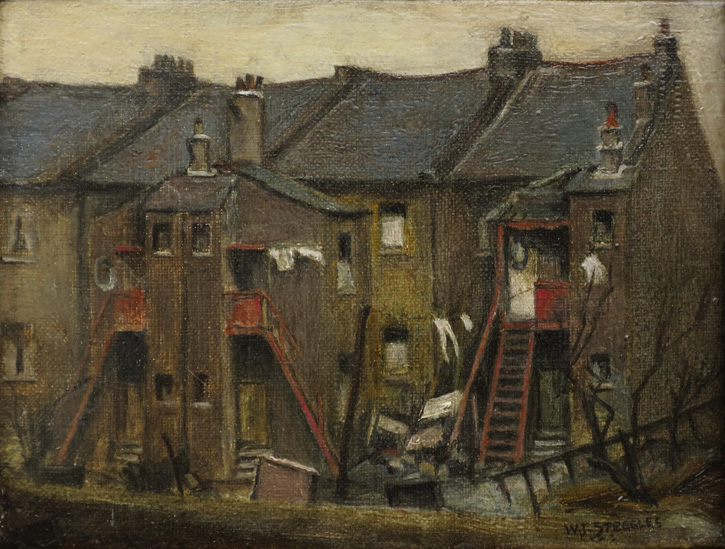
There will also be a selection of archive material and preparatory work from both brothers, along with representative work by their Group contemporaries for context. Roughly one-third of the work in the show has not been seen in public in the modern era so the exhibition offers a rare opportunity to see so much work that is privately held.
Alan Waltham, East London Group researcher
'Brothers in Art: Walter & Harold Steggles & the East London Group' is on display at the Beecroft Art Gallery in Southend from 11th September 2021 to 8th January 2022
